Espace culturel Nu-e (복합문화지구 누에)
13.3Km 2024-04-08
462-9, Wanju-ro, Wanju-gun, Région Jeonbuk
Nu-e désigne un complexe culturel situé à Wanju-gun dans la région de Jeollabuk-do, inauguré sous le thème de "un espace de vie où chacun communique à travers l'art". En tant que projet de restructuration culturelle, il a été décidé de construire le site dans la région de Jeollabuk-do Jameop (silkworm business) avec notamment différents programmes culturels et éducatifs. Parmi les différentes structures, on compte le 'Nu-e Art Hall' proposant différentes expositions et spectacles mais aussi une guesthouse dénommée 'Sum', un espace de camping, des espaces ateliers, etc. Le site propose aussi l'espace "Dreaming Nu-e Playground" pour les enfants.
Il est aussi recommandé de visiter le 'Jeonbuk Provincial Museum of Art' et le 'Samnye Culture and Art Village', de grands sites touristiques à Wanju-gun.
Dong Nak Won / 동락원
13.3Km 2025-03-05
33-6, Eunhaeng-ro, Wansan-gu, Jeonju-si, Région Jeonbuk
+82-63-287-9300
Hanok Hotel Dongrakwon used to be a memorial hall for Missionary M. Junkin who worked in Jeonju in 1985, and had long been used as an official residence for the Bank of Korea. The 100-year-old Hanok retains the history and culture that modern hotels do not have. Since the renovation to make it a hanok hotel, it is now utilized as a space for traditional music performances, traditional weddings, or small weddings. The entire building can be rented for various gatherings, seminars, conferences, family events, and so on. The beauty of a hanok is found in every corner of Dongrakwon such as the wide lawn, the pond in front of Sarangchae, and the jar stand next to Anchae. The antique furniture and folding screen in the rooms have been used for generations, enabling guests of the hanok to time travel to 50-100 years ago.
The yard is a great place to play simple Korean traditional plays such as Jegichagi and Dakjichiji, whereas the free-of-charge red clay sauna will relieve fatigue. The outdoor hot / cold bath and sun bath site is a new addition to Dongrakwon.
There is a 600-year-old Ginkgo tree standing on the Eunhang-ro, where the accommodation is located. Opposite the alley is Donghak Revolution Memorial Exhibition Hall; Gyeonggijeon East Gate is 200m away. The hotel is close to Taejo-ro, the busiest street of Jeonju Hanok Village; neighboring Eunhang-ro, Choi Myeong Hee-gil, and Eojin-gil all retain the unique quietness and beauty of Hanok Village. It will be also nice to ride on the mountain bike that Dongrakwon offers free of charge in order for guests to visit corners of the Hanok Village, or ride along the Jeonjucheon Stream.
Gyodonggaon / 교동가온
13.3Km 2025-08-12
73-1, Eunhaeng-ro, Wansan-gu, Jeonju-si, Région Jeonbuk
+82-10-5106-3355
Gyodong Gaon is located right in the middle of the main street of Jeonju Hanok Village. The word "gaon" means "middle" in Korean. It's a two-story traditional Korean house that stands out among the rest of the traditional Korean houses in the alley leading to Omokdae. Just inside the gate is a yard with colorful flower trees, jars of sauces, and furnace. The mural on one of the walls is popular among the guests as a place to take photos.
The "numaru", or "loft" in Korean, overlooks the Hanok Village, and is one of the best places in the village to get a closer look at the 500 year old zelkova tree and the foot of the mountain nearby. Open to all the guests, the "numaru" is very popular during the winter as well as the summer. It's an open space with a wooden floor, so it's very cool during the summer, and it also serves as an observatory to enjoy the view of all the snow-covered trees and roofs in the Hanok Village during the winter while having a hot cup of tea.
The owner of the guesthouse has been living here for 37 years. He rebuilt his house and turned it into a hanok guesthouse in 2014 while making sure the rooms are well insulated and comfortable to stay.
He built a two-story building to make an efficient use of the space, and focused on making all the rooms look different. The house has five rooms, and only the “Meomulda Room” on the first floor is the only rooms with a living room separated from the bedroom. All you have to do is open the door to enjoy the view of the yard, Hanok Village, and Omokdae. The “Nanuda Room” on the second floor is the largest one that can accommodate more than five people, making it the most popular choice among families. The "Damda Room" and "Kkumkkuda Room" both have an attic that can be reached by a ladder. The attic is big enough to sleep two adults, and some guests actually sleep there for a unique experience. One of the walls of the attic is finished with cypress wood which has a pleasant scent. The “Geurida Room” has the best view through the two windows on the either side of the room, in addition to warm sunlight and cool wind that come through the window. Modern, not traditional, doors are installed in all the rooms for better sound proofing and insulation.
Gyodong Gaon offers a number of experience programs, such as traditional games like “gulleongsoe”, “tuho", and “Korean top”, As well as “sabang chigi”, “sampalseon”, and “ttangttameokgi”.
Many Korean adults are familiar with these games, while children and foreigners can find these games interesting. All these traditional Korean games are free to play.
Hanokstory [Korea Quality] / 한옥이야기 [한국관광 품질인증]
13.3Km 2024-04-07
83-14, Eunhaeng-ro, Wansan-gu, Jeonju-si, Région Jeonbuk
+82-10-9203-1111, +82-10-4166-7799
Hanok Story in Hyanggyo-gil in Jeonju Hanok Village is a traditional Korean house built over 60 years ago and was recently renovated to serve as a guesthouse. Thus, it boasts of modern convenient facilities but preserves most of the features of a traditional Korean house, which was home to the guesthouse owner and his wife for over 35 years. The couple put old books, LPs, old movie posters, Korean lunch boxes, and old television on display in every corner of the house to create an old look and finish. In the yard is a 50-year-old persimmon tree that provides cool shade during the summer and delicious persimmons in the fall. All the old items in the house have a story to tell, and that's why the owner named his guesthouse "Hanok Story."
At the entrance of the house is a Korean phrase meaning “Enjoy the Five Blessings (longevity, wealth, health, love of virtue, and peaceful death) generation after generation with the energy of the sun, moon, and stars.” That’s why the rooms are named “Geumbit (Golden Light),” “Haetbit (Sunlight),” “Dalbit (Moonlight),” and “Byeolbit (Starlight).” The phrase is also engraved on top of the door to the "Haetbit Room." There are a total of seven guestrooms -- four in the main building and the "Solbit Room," "Deluxe Room No. 1," and "Deluxe Room No. 2." All the rooms are furnished with bathroom, TV, and air conditioner. Deluxe Room No. 2 has a kitchen for the guests to cook. There is a garden of sowbread, balloon vine, and hydrangea in the yard.
There is also a cafeteria made of cypress wood in the yard. The walls are covered with post-its left by the guests as well as musical instruments and dolls. It's where tea and breakfast are served. Homemade Korean breakfast is served for free. A tea class is also available during the weekend upon reservation.
Jeonju hanok house [Korea Quality] / 전주한옥숙박체험관 [한국관광 품질인증]
13.3Km 2024-04-07
56-1, Eunhaeng-ro, Wansan-gu, Jeonju-si, Région Jeonbuk
+82-10-3659-0055
Jeonjuhanok Korean House is a traditional Korean house built more than 60 years age, and it was recently remodeled for visitors to see and experience an old traditional Korean house. It’s conveniently located on the street called "Eunhaeng-ro" right in the middle of Jeonju Hanok Village for those visiting the area to take a tour of the hanok village. Although it's in the middle of the village, it's quiet inside because it's located at the end of a long, wide alley, which has the feel of an art gallery thanks to the lighting. There is a table in the yard in front of the ‘ㄱ’-shaped house. Behind the house is a café where breakfast is served. The house has an open space between the rooms called "toetmaru", which serves as a living room as in all traditional Korean houses. It’s where Koreans used to rest under the warm sunlight in the old days. The guests must pass through this "toetmaru" to get to the roms.
Jeonjuhanok Korean House has seven "ondol (floor-heated)” rooms with a loft. The rooms are clean and have a simple interior with a wooden ladder to the loft, which is a favorite place for most kids staying here with their parents. Each guestroom is furnished with a water purifier. The guesthouse serves toast, caffe Americano, fruits, and tea for breakfast.
Festival du Bibimbap à Jeonju (전주비빔밥축제)
13.3Km 2025-08-12
99, Girin-daero, Wansan-gu, Jeonju-si, Région Jeonbuk
• Centre d'appels 1330 : +82-63-1330 (coréen, anglais, japonais, chinois) • Pour obtenir plus d'info : +82-63-277-2515, 2517 (coréen)
Le meilleur des 3 mets représentatifs de la dynastie Joseon et plat préféré des étrangers, le Bibimbap de Jeonju est le plat numéro 1 de Corée. Le Bibimbap de Jeonju est cuisiné avec du riz aux pousses de soja (l’un des 10 plats réputés de Jeonju), avec quelque 30 sortes de fruits secs comme des fruits du gingko, des pignons de pin, des châtaignes, des noix, etc, et est accompagné de légumes frais qui sont choisis selon les saisons. C’est un aliment complet, sain et nutritif aimé des gens du monde entier permettant d’absorber des glucides, de la graisse, des protéines, des vitamines et des minéraux et qui contient la sagesse des ancêtres et le principe de l’univers.
‘Le Festival du Bibimbap de Jeonju 2017’ sera ouvert du 26 au 29 octobre dans la ville de Jeonju, au Centre de la Culture Traditionnelle de Corée. Centré sur le plat représentatif de la capitale de la gastronomie de Corée, le Bibimbap de Jeonju, le festival principal du Tourisme de la gastronomie sera assaisonné de différents plats et cultures de la ville et sera accompagné de saveurs, de charmes et de plaisirs exquis.
Samrockhon [Korea Quality] / 삼락헌 [한국관광 품질인증]
13.3Km 2024-04-07
47-8, Eunhaeng-ro, Wansan-gu, Jeonju-si, Région Jeonbuk
+82-10-7799-7358
Samllakheon is located in the center of Jeonju Hanok Village which is the highlight of traveling in Jeonju. Samllakheon has been opened newly by the owner husband and wife who are running Bugyeongdang, a lodging in traditional Korean style house. The building of Samllakheon used to be the etiquette training center of Jeollabuk-do Province, and its size is much larger and more magnificent than ordinary houses and its style is very antique. The arrangement of the houses, the pillars, rafters, crossbeam and the ridge of the roof are clearly different from those of ordinary houses. The garden covered with pebbles and rocks and the well-tended flower bed are also worth seeing.
The rooms are composed of the five rooms of Spring, Summer, Fall, And, & Winter. Every room has a duplex attic under the high ceiling and a warm and clean restroom. The guests can help themselves with coffee, tea, toast, etc. for breakfast from the communal mini kitchen. The guests of Samllakheon can have 50% discount on Korean traditional clothes and 30% discount on rent of electric bike. It is also possible to experience traditional culture including making Injeolmi rice cake, Korean paper art, pottery and fragrant purse by making a reservation in advance.
The owners of the house can give information on Jeonju Hanok Village, many other tourist attractions and famous restaurants in Jeonju area. Major tourist attractions within walking distance are Jeondong Catholic Church, Gyeonggijeon, Gyodong Art Center, Choi Myung-Hee Literature Center, Omokdae, Jeonju Hyanggyo, Pungnammun Gate nd Nambu Market & Youth Mall.
Centre d'exposition de l’artisanat traditionnel de Jeonju (전주공예품전시관 전주명품관)
13.3Km 2024-04-07
15, Taejo-ro, Wansan-gu, Jeonju-si, Région Jeonbuk
+82-63-282-8886
Le centre d’exposition de l’artisanat traditionnel de Jeonju permet non seulement aux visiteurs de découvrir la beauté de l’artisanat traditionnel coréen, mais aussi de créer leurs propres créations. Le centre abrite un hall d’exposition, un hall spécial et un hall pour les activités. C’est dans le hall des activités que les visiteurs peuvent créer leurs propres pièces : feuilles de papier de riz, poterie, meunuiserie, broderie etc. Par ailleurs, dans le magasin d’artisanat il est possible d’acheter des pièces faites par des professionnels.
Siwon/ 시원
13.3Km 2025-03-05
45-41, Omokdae-gil, Wansan-gu, Jeonju-si, Région Jeonbuk
+82-10-6520-7840
Situated within Jeonju Hanok Village, Siwon is a hanok experience hall designated by the local government. The names of its individual rooms carry such meanings as “a wish for a life full of love, health and joy”. Each room (except the Gadeukbang) has a small attic where guests can have fun climbing up and down a ladder.
The clay structure with a wood shingle roof is the source of many fond memories for the owner, a permanent fixture of the village, who was born and grew up in the house. The house was once called “the house of persimmon trees in Ssangsiam alley”.
Although the framework of the house was completed in 1954, it has only been open to tourists since it was repaired and renovated in 2014. The house has been fully insulated against draughts and sound-proofed, transforming into a comfortable, cozy guest house that retains the unique beauty of a traditional Korean hanok.
The house’s yard contains a small flower garden and a swing, as well as a space where guests can play tuho, a traditional game in which the players try to throw sticks into a canister, jaegichagi, and other traditional games. In addition, guests can try their hand at woodcraft by cutting and carving pieces of wood into artworks of their own making.
A number of attractions are within walking distance of Siwon, including Gyeonggijeon Shrine, which contains the portrait of King Taejo Seong-gye Yi, the founder of the Joseon Dynasty; Jeondong Cathedral, which features a European architectural design; Omokdae, where King Taejo defeated the Japanese army and held a banquet; Jeonjuhyanggyo Local Confucian School; Namcheon Bridge and Cheonyeonru Pavilion; Nambu Market, a foodies’ paradise; and the Youth Mall
Arboretum de Daea (대아수목원)
13.3Km 2024-04-07
94-34, Daeasumok-ro, Dongsang-myeon, Wanju_Gun, Région Jeonbuk
+82-63-280-4590
L’arboretum de Daea se situe sur une colline, sur le mont Unjangsan dans la chaîne montagneuse de Sobaek. Grâce à son emplacement dans une zone à l’intérieur des terres dans la partie Sud-Ouest de la péninsule coréenne, il bénéficie de températures relativement modérées. La zone de l’arboretum de Daea est l’une des huit régions arrières de la Corée dont l’accès est restreint à la plupart des touristes. Ainsi, de nombreuses espèces végétales ont été préservées dans leur état naturel, et protégées de la destruction humaine. La région abrite environ 96 espèces animales, parmi lesquelles des oiseaux comme le coucou ou le bruant élégant, ainsi que des sangliers, des élans et des ratons-laveurs. L’arboretum est organisé selon divers thèmes, comme l’arboretum tropical, la colline boisée monument naturel, le centre d’observation où les visiteurs peuvent comparer les différentes espèces d’arbres, la roseraie et le jardin paysager.

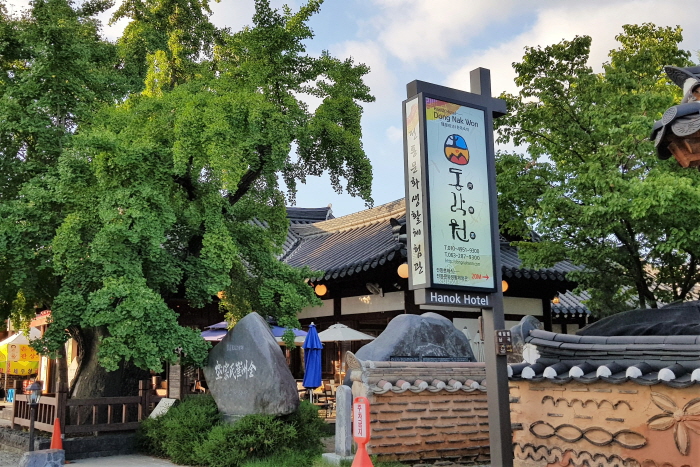
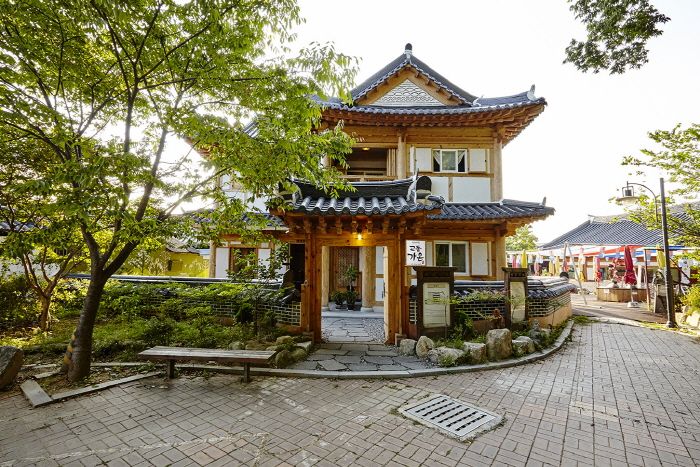
![Hanokstory [Korea Quality] / 한옥이야기 [한국관광 품질인증]](http://tong.visitkorea.or.kr/cms/resource/20/2046320_image2_1.jpg)
![Jeonju hanok house [Korea Quality] / 전주한옥숙박체험관 [한국관광 품질인증]](http://tong.visitkorea.or.kr/cms/resource/90/2531490_image2_1.jpg)
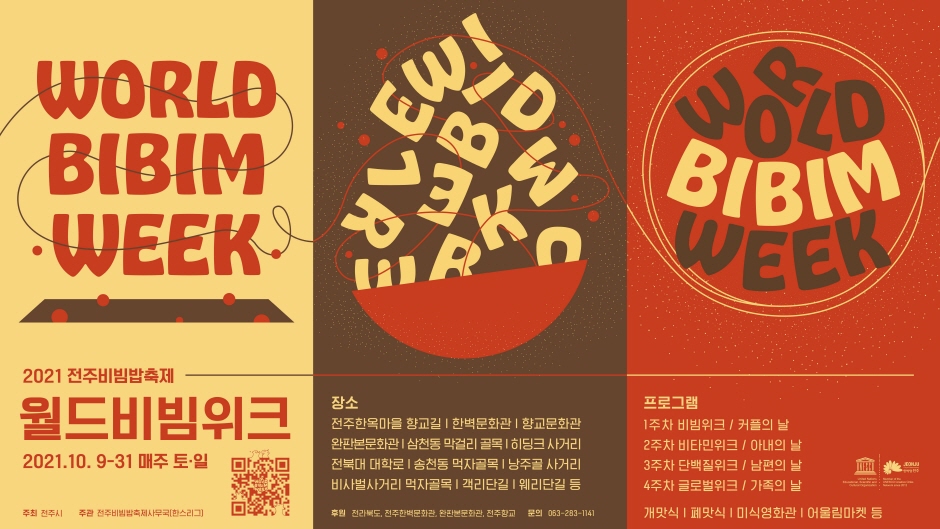
![Samrockhon [Korea Quality] / 삼락헌 [한국관광 품질인증]](http://tong.visitkorea.or.kr/cms/resource/02/2596602_image2_1.jpg)
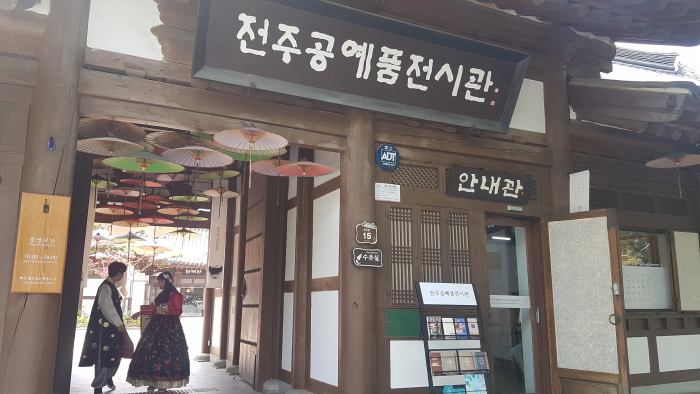
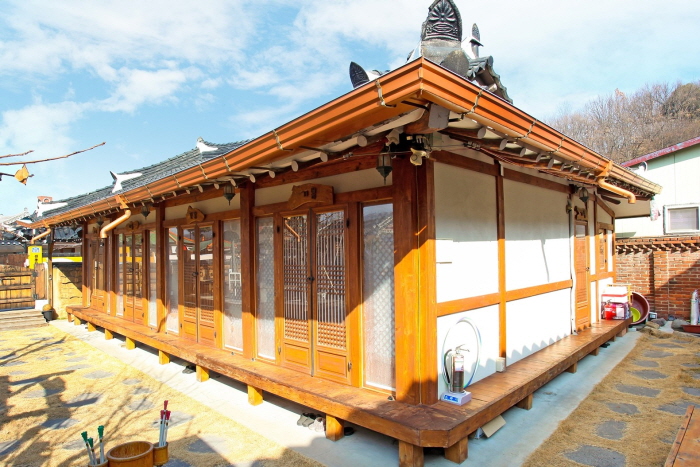
 Français
Français
 한국어
한국어 English
English 日本語
日本語 中文(简体)
中文(简体) Deutsch
Deutsch Español
Español Русский
Русский